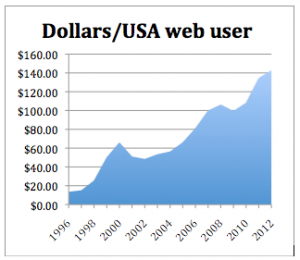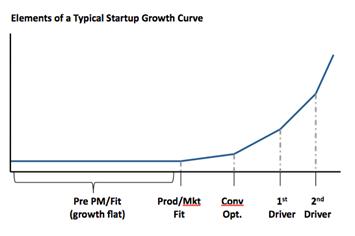FACT: Conversion Rate Optimization tops the Digital Marketing Priorities for 2013 according to the Econsultancy Report: “Quarterly Digital Intelligence Briefing: Digital Trends for 2013″
Looks like the big guys are finally getting it! I’ve been highlighting the benefits of conversion rate optimization to startups for years. It’s nearly impossible to grow any startup without at least some systematic effort to improve your conversion rates.
The challenge with conversion rate optimization is that many people go through the motions, but fail to get close to their optimal conversion rates. People forget that conversion rate optimization is more than just random tests and numbers. It’s about understanding the needs of visitors to your website and where your website falls short in delivering on those needs. And a real conversion is more than simply a click to the next step in the funnel. To effectively convert someone you need to get them to a must-have experience with your product. If you don’t have a must-have experience, then conversion rate optimization doesn’t really matter anyway. Read this post for more information about creating a must-have experience.
So assuming you have a product that hits the mark, how do you effectively execute a conversion rate optimization program? One choice is to hire an expensive conversion rate optimization agency. While they are expensive, the good ones (such as Conversion Rate Experts) are well worth the money. But startups can rarely afford a world class conversion rate optimization agency.
Fortunately my team and I at Qualaroo have just completed the most comprehensive guide to conversion rate optimization that I have ever seen. It contains twelve chapters of conversion rate optimization best practices. It draws on inspiration from several of the best articles written about conversion rate optimization and links back to those articles.
The guide includes the following topics:
- Chapter 1: What is Conversion Rate Optimization?
- Chapter 2: Why Conversion Rate Optimization is Important
- Chapter 3: The Basics of Conversion Rate Optimization
- Chapter 4: Building a Testing and Optimization Plan
- Chapter 5: User Experience and Funnel Optimization
- Chapter 6: Landing Page Optimization
- Chapter 7: Reducing Bounce and Exit Rates
- Chapter 8: Myths About Conversion Rate Optimization
- Chapter 9: Tools to Test and Optimize Conversion
- Chapter 10: Measuring Conversion Rate Efforts and Calling Winners
- Chapter 11: Bonus Advanced Tips and Hacks for CRO
The magic of conversion rate optimization is that it makes all of your marketing work better. Getting users to your site is expensive, whether you pay real dollars or it’s just effort and creativity. If you don’t make the most of their attention, they are unlikely to ever give you a second chance.
Even if you already consider yourself a pro at conversion rate optimization, the guide includes plenty of nuggets to make you even more effective. Of course if we missed anything, please share some suggestions in the comments of this blog post. I don’t even mind if you are a consultant and include your contact information to attract prospective clients. And if you have any questions, please post those as well. I’ll check back frequently to try to answer them.
Click here to read The Beginner’s Guide to Conversion Rate Optimization for FREE



 Andrew Chen
Andrew Chen Brant Cooper
Brant Cooper Dave McClure
Dave McClure Eric Ries
Eric Ries Jamie Siminoff
Jamie Siminoff Steve Blank
Steve Blank